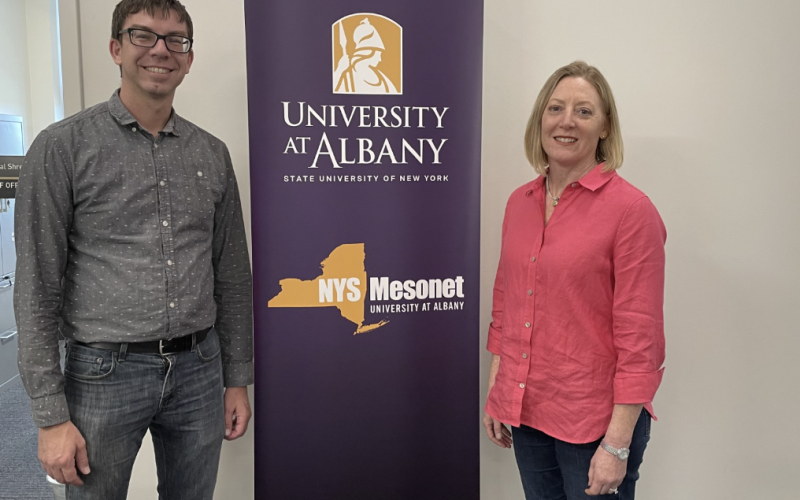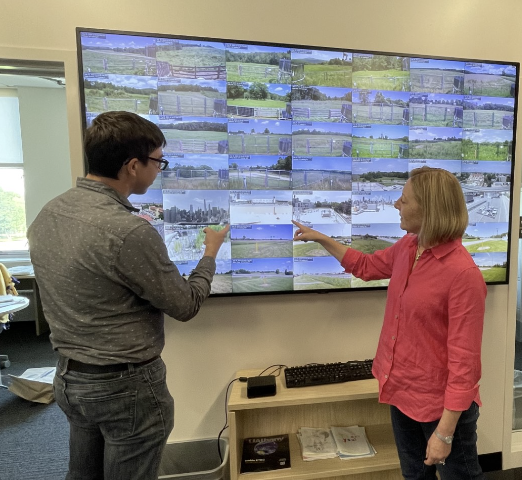Erie County Turns to UAlbany Researchers for Winter Storm Preparedness

By Mike Nolan
ALBANY, N.Y. (July 25, 2023) — Last December, a Christmas week blizzard brought nearly 52 inches of snow to the Buffalo area over five days, including a record 22.3 inches of snow falling at the Buffalo airport on Dec. 23.
The historic storm was described as “one of the worst in history,” claiming the lives of 46 people in Erie County.
Now, through a new 18-month, $349,774 partnership with University at Albany and National Weather Service (NWS) researchers, Erie County leaders are aiming to ensure Western New Yorkers are better prepared for future winter storms.
The project has two main goals:
- Create an updated winter storm rating scale for county and emergency planners to enhance their understanding of past storms as well as better prepare for future ones.
- Assess official communication around last year’s Christmas blizzard and suggest ways to improve messaging for future storms.
UAlbany researchers leading the project include Nick Bassill, director of research and development at the University’s Center of Excellence in Weather & Climate Analytics and Jeannette Sutton, an associate professor at the College of Emergency Preparedness, Homeland Security and Cybersecurity (CEHC).
“Erie County approached me with this idea after last year’s blizzard event,” said Bassill, who works on a variety of weather-related projects that help with decision making. “It’s a two-part project. The first, which I’ll be working on, is to create a winter storm rating scale for emergency managers. The other is to look at the effectiveness of communication around last year’s storm.”
“We have two deliverables on the social science side,” added Sutton, who specializes in disaster and risk communication. “One is to review Erie County’s messaging around the blizzard last year and offer practical recommendations. The second is to hear from residents directly about their understanding of winter weather risks.”
Erie County Winter Storm Scale
To create the winter storm rating scale, Bassill is partnering with Dana Tobin, a researcher at the NWS Weather Prediction Center who helped develop the Winter Storm Severity Index (WSSI).
The new rating scale will be based off the WSSI, but with additional, non-weather variables that are “tailored to Erie County,” Bassill said.

“The National Weather Service currently has a five-point ‘impact rating’ scale for winter storms,” Bassill said. “Instead of reinventing this, we want to enhance it by adding non-weather factors, such as how many people would be impacted, socioeconomic factors, road networks and critical infrastructure, how long the storm will last, and more.”
Communication Assessment
To assess the communication around last year’s blizzard event, Sutton, and her team of student researchers in CEHC’s Emergency and Risk Communication Message Testing Lab, will collect messages from Erie County social media pages, including Twitter, Facebook and video content posted to YouTube.
Next, they will align the timing and content of public-facing messages about the storm with data collected by the New York State Mesonet at UAlbany to determine the timeline of events and corresponding risk messaging.
A report will be delivered to Erie County officials before the end of this year with recommendations on how to improve future risk communication.
“We are most interested in message features including content, style and structure, persuasive strategies (such as fear appeals), uncertainty language and how messages changed over the course of the storm,” Sutton said.
“Our assessment will identify strategies used to communicate with vulnerable members of Erie County, followed by suggestions to increase the effectiveness of public messaging during future severe winter weather events.”
A More Resilient New York
While it’s unlikely that the new winter storm scale will be ready this year, Bassill expects to have a working prototype within 12 months, in time for the 2024 winter season.
Once launched, the researchers plan to survey Erie County residents about how messages developed using the new rating scale would impact their decision-making around winter storms.
If successful, Bassill believes the rating scale can be customized for other counties across New York and beyond.
“The Department of Transportation has long talked to us about creating a county-by-county winter storm index,” Bassill said. “That’s not super different from what was requested here and something we may explore in the future.”




